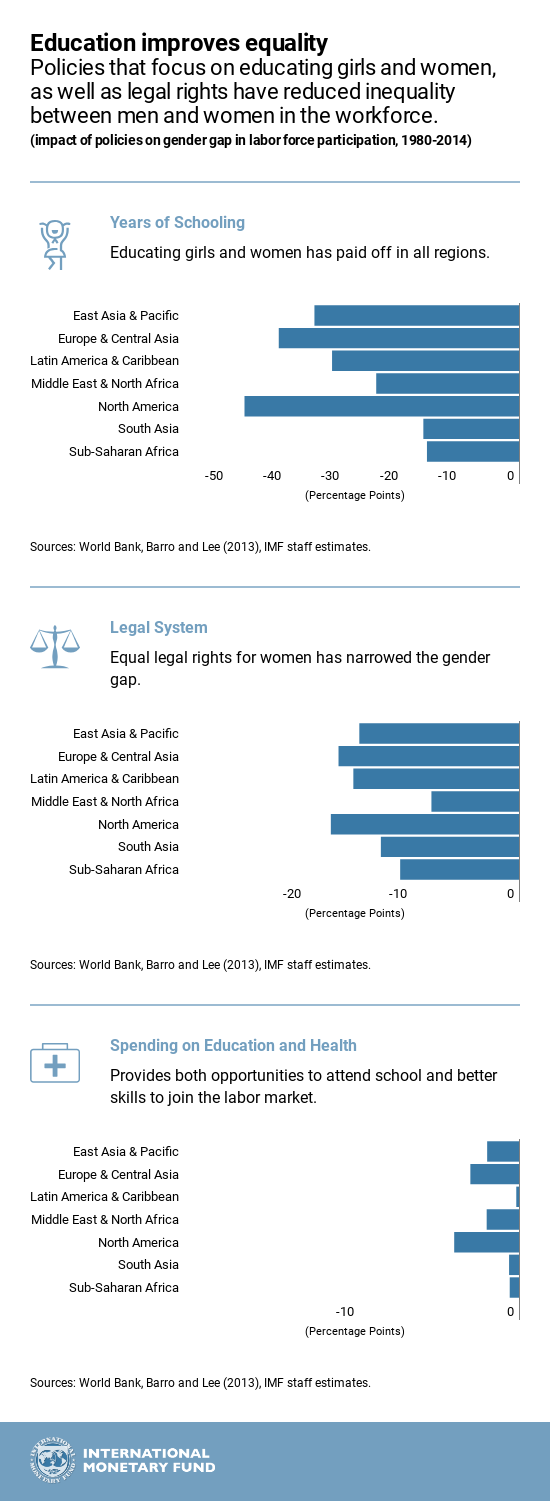Government policies have boosted women’s participation in the work force. But women still make up a smaller percentage of the labor force than men in most countries. Of the many policies available, such as education and legal rights, which ones provide the most “bang for the buck” to reduce inequality between men and women?
Our chart of the week, based on a recent IMF study , shows that policies that narrow gender gaps between men and women in education have paid off the most in all regions.
By analyzing data from 1980-2014, the study found that education contributed more to narrowing the gender gap in North America—by 47 percentage points—than in any other region, because the average years of women’s total schooling is much higher. Europe and Central Asia lowered the gap by more than 41 percentage points. East Asia and the Pacific reduced the gap by more than 35 percentage points. South Asia and sub-Saharan Africa have the potential to catch up, both currently at 16 percentage points each.
When comparing regions, most have also been able to narrow the labor force participation gap by more than 10 percentage points on average, through their legal institutions and equality in legal rights for women, during the time frame studied. Strong legal institutions, such as supreme courts, parliaments, and heads of state, as measured by the control of corruption, and the economic risk rating of a country, played a role in increasing female labor force participation.
Equal legal rights for women, specifically equal inheritance rights, also served to reduce the gap in these countries. The Middle East and North Africa is an exception, as this region still faces a relatively high number of legal restrictions against women.
Equal legal rights for women has narrowed the gender gap between men and women.
Infrastructure—in particular, improving sanitation facilities —can play a large role in less developed countries. Improved facilities, including access to running water and electricity, results in less time needed to spend on household work, and more opportunity to join the labor market. South Asia and sub-Saharan Africa have potential to catch up with the other regions.
While a lot of progress has been made in recent years to reduce gender gaps, women still do not participate in the work force at the same rate as men in most countries. A woman’s access to education, social and financial services, and legal rights remains limited at best, especially in emerging markets and low-income countries.
These differences result in less economic power for women, lower savings and pensions, and lower growth and economic development in these countries.
The scope for government policies to narrow gender gaps at work is large. Some economic policies that can boost gender equality include:
|
Education |
Girls need to go to school and stay in school. |
|
Fiscal policies |
Improve infrastructure, especially sanitation facilities in low-income countries. |
|
Social campaigns and policies |
Reduce adolescent fertility and equalize the legal marriage age for women and men to keep girls in school. |







